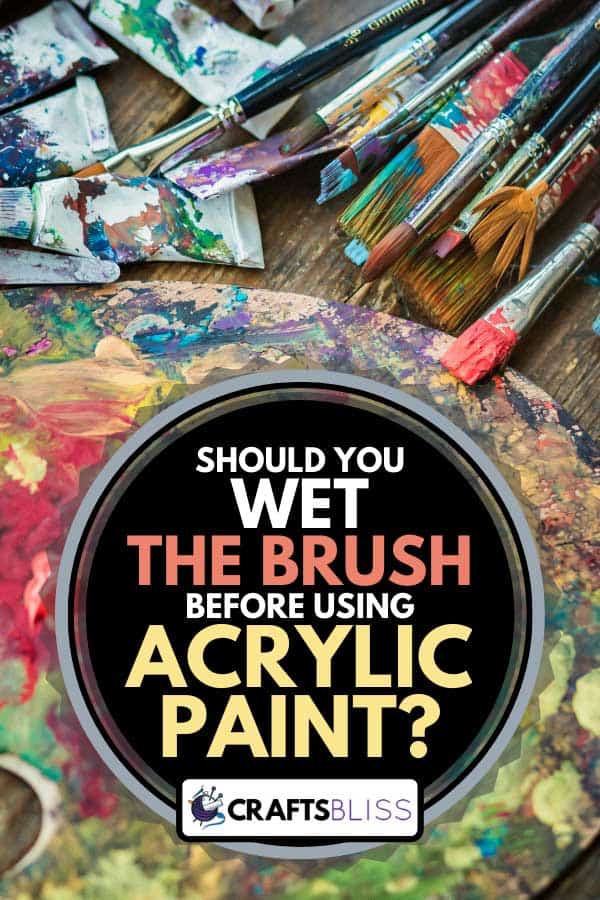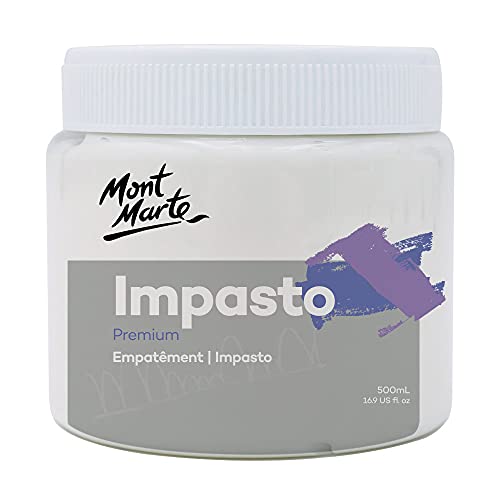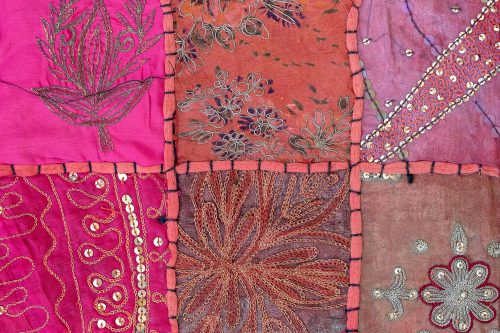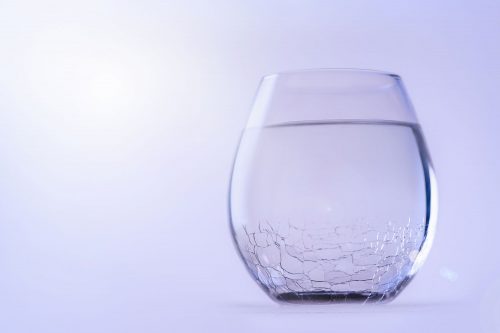Perhaps you've recently got an acrylic paint set, and you want to get started, but do you wet the brush first before using the acrylic paint? We've sifted through our own experience and that of other artists to find the information you've been looking for. So let's take a look.
You do not have to wet your brush first when using acrylic paint; however, if you want the paint to glide onto your canvas, a little moisture can help. It's easier to use acrylics with a damp brush. Using a brush without water lends itself to dry brush techniques and thicker applications of paint.
Let's take a look at a couple of these techniques and then investigate some other tips and tricks about using acrylic paint.

When To Wet Your Brush With Acrylic Paints
This image shows a brush mixed with acrylic paint and water on the left and a dry brush technique on the right.
Acrylic paints are great paints to use. Their colors are vibrant. They're easy to mix. They dry quickly, and they're relatively inexpensive. Acrylics come in traditional tube paint forms, but also in bottles and even liquid inks, which allows for lots of versatility in your painting.
So when should you wet your brush? If you are building up thin layers of paint, it's always a good idea to start with a damp brush. Your paint flows smoothly across the surface of your canvas, and you're less likely to get blobs and globs of clumping paint, mainly if you're using tube paints.
A wet brush will also help you blend the division between two colors more easily.
When Not To Wet Your Brush Using Acrylic Paints
There's a technique called dry brush that's wonderful for creating the effects of fur, grasses, and other textured elements in the natural world. For this technique, you want to use a dry fan brush and put a minimal amount of paint on the tips. When you move the brush across your surface, you'll get brushy type strokes. If you used water, these strokes would not have the same distinct quality.
This set of three soft fan brushes can give you this drybrush effect. Click here for these on Amazon.
How Do You Keep Acrylic Paint From Drying Out The Brush?
Acrylic paint dries relatively quickly, and if you're not careful, it can dry onto your brush rendering it useless. But if you're in the middle of a painting session, you don't want to stop and rewash it before you reach for that color again. So, what can you use to keep the paint from drying out?
There are great additives called flow improvers that will keep your acrylic paint from drying too quickly (both on your canvas and your brush). These mediums are added directly to the paint for this purpose.
Click here for this on Amazon.
You can also keep a cup with water at your painting station to keep the paint from drying on your brush. But you don't want to leave a brush standing in a cup for very long. It will bend the bristles and eventually damage the brush. Your best bet is always to wash and clean your brush if you're not going to be using it often during any given painting session.
How Do I Get A Smooth Finish With Acrylic Paint?
There are a few tricks you can use to get a smooth finish with acrylics. First, start with a smooth canvas: the smoother the surface, the easier your brush moves over the surface. Use a soft brush. The firm brushes used for oil painting will leave brush marks with acrylics.
Look for smooth primed canvases. Find this one on Amazon.
The same flow improver you can use to keep your paint from quickly drying will also smooth at the application of your acrylics on canvas. The same goes for using a bit of water on your brush. You can even mist the surface of your paint with a spray bottle to even out the surface.
Remember to use light layers and avoid brushing over the same area again and again.
What Do You Mix With Acrylic Paint?
There are so many cool mediums and additives to mix in with acrylic paint. From additives that create texture to mediums that give a glossy sheen to the paint, you can use these tools to make your artwork sing.
A basic matte medium will extend the life of your paint and enhance the flow of brush onto canvas. It dries with a matte finish and can also be used as an adhesive for collage elements. Click here for this on Amazon.
A gloss medium will add surface shine to your paint. Like other mediums, it extends the life of your paint and makes it easier to apply to the canvas. It also adds a bit of transparency to your paint color. Click here for this on Amazon.
An impasto medium allows you to do some raised surface and 3D modeling on your canvas. If you love a built-up surface, you're going to want to have some of this in your studio. Click here for this on Amazon.
A pearlescent mixing medium adds shimmer and sheen to your paint. If you want your acrylics to have a metallic glow, then this stuff is what you need. It has the dimensional shimmer of a freshwater pearl, and when mixed with your favorite colors, will give them the same glow. Click here for this on Amazon.
How To Clean Acrylic Paintbrushes?
Use a bit of olive oil and some liquid dish soap in equal parts and put on a clean paint palette. Coat both sides of your dirty paintbrush with the mixture, dabbing to make sure you've got the bristles coated. Then take your brushes to the sink and run warm water. Using the palm of your hand as a hard surface, rub your paintbrush onto your palm, letting the water flow through it until the water runs clear.
When all the paint is gone, use a rag or paper towel and squeeze out any excess water. Lay your paintbrushes flat, or bristles up to dry. Never store them standing on their bristles.
Here's a handy Youtube video demonstrating this brush cleaning technique:
The Joy Of Painting
Now that you've got a great handle on how to best care for your acrylic paint brushes, it's time to get painting. Pick your favorite subject matter, mood, or feeling and put color to the canvas. The only way to really learn a craft is by experimenting, trying, and learning.
If you enjoyed this post here at CraftsBliss.com, please stop by again when your next painting question arises.









![Read more about the article Does Homemade Soap Expire? [and What Happens Then?]](https://craftsbliss.com/wp-content/uploads/2020/10/Homemade-soap-with-natural-essential-oils-from-plants-and-flowers-top-view-closeup-photo-stock-500x333.jpg)

![Read more about the article What Wood Is Best For Pyrography? [Try these 3 Types]](https://craftsbliss.com/wp-content/uploads/2020/11/A-pyrography-artist-making-wood-art-using-a-pyrography-pen-on-a-piece-of-wood-500x333.jpg)

![Read more about the article Is Glass Blowing Expensive? [Price ranges discussed]](https://craftsbliss.com/wp-content/uploads/2020/10/A-glass-blowing-artist-forms-a-blob-of-glass-into-a-vessel-using-a-gas-torch-500x333.jpg)